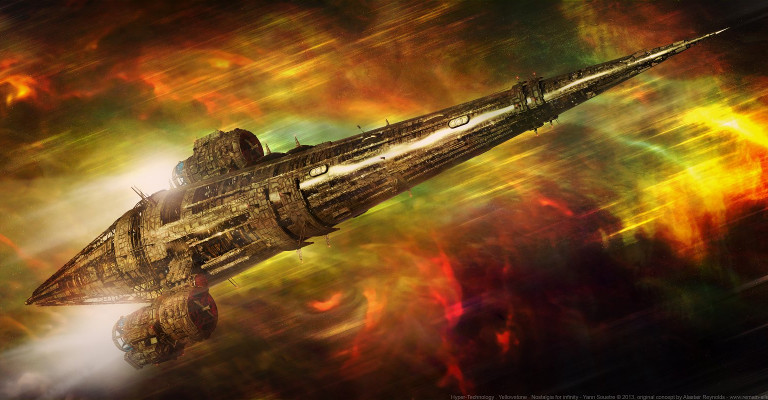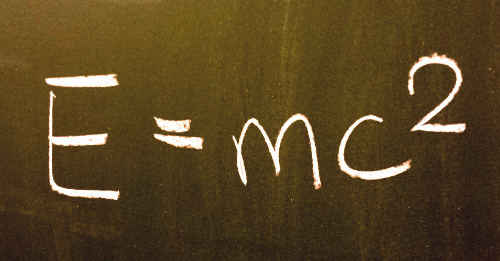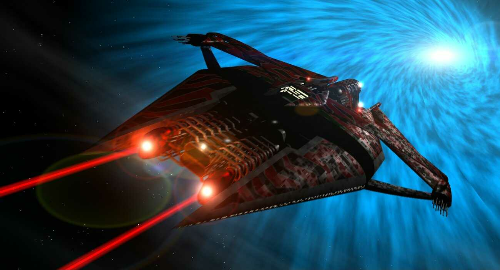
Science is a tool, and is inherently about understanding and knowledge. But science has also been used to destroy, a topic often explored in science fiction. Science is a double-edged sword, and science fiction sometimes becomes science reality.
The history of science is riddled with brilliant scientists making discoveries that have changed the course of history, but learning how to manipulate the sometimes violent forces of nature isn’t always a good thing.
Science is driven by curiosity, but curiosity doesn’t free us from responsibility. Possible advances in weapon’s technology is sometimes a driving force behind scientific research, but often times also fundamental research has applications we haven’t considered. Can today’s advances in high energy physics, for instance, be turned into tomorrow’s weapons of mass destruction? It has happened before.
Destruction for a penny
In November 1905 Albert Einstein published a paper where he introduced the world to one of the most well known equation from physics: E = mc2. The equations tells us that energy is mass times the speed of light squared. Since the speed of light is a large number, it follows that even in a tiny bit of matter there is a lot of energy. The question is: can this energy be extracted?
The answer is, as we already know, yes. When the nuclei in a nuclear reactor split up, they decrease slightly in mass. This mass is released as energy through radiation, and eventually converted into heat. A nuclear reactor is thus nothing but a fine tuned and very expensive water boiler that heats water by destroying matter.
A nuclear reactor is a highly controlled reaction. If you lose control of it, it will melt and can release explosive gasses and leak radioactive material into the environment. But the nuclear reaction that goes on within its core can be exploited in other ways.
A more brute force application of this physics was developed during World War II: the nuclear bomb. The horrific act of blowing up the city of Hiroshima only took about 0.7 grams of matter – turned into pure energy. That’s a fifth of the weight if a US penny, although the bomb itself weighed several tons.
The largest hydrogen bombs developed later are roughly 3000 times as powerful as this one, annihilating about 2.3 kilograms of matter. Hydrogen bombs are fusion bombs that exploits the processes going on in the sun. It’s very energetic, but there are even more direct ways of destroying matter to release large amounts of energy.

The positron, the electron’s evil twin
In the film “Angels and Demons”, based on a novel by Dan Brown, terrorists threaten to blow up the Vatican with an anti-matter bomb. Anti-matter is the opposite of matter. The existence of anti-matter was considered before Einstein, but the modern theory of anti-matter was presented by Paul Dirac in 1928. An anti-electron was hypothesised, and later discovered in 1932. The new particle was named “the positron”. Positrons have been popularised in science fiction in, among other things, the positronic brain of the android Lieutenant Commander Data in Star Trek.
I find anti-matter fascinating. Its discovery comes from one of two possible interpretations of a property of Dirac’s equations. For a science enthusiast like me there’s something beautiful about the way a number of discoveries came about. Many are results of logical outcomes of equations somebody made up to solve a theoretical problem.
Anti-matter may sound like science fiction, but it is not. Every lightening strike produces electron-positron pairs in the atmosphere. When the two particles meet, they destroy each other and their entire mass is released as energy. It’s a 100% conversion from matter to energy. Theoretically you could build a Hiroshima bomb with 0.35 grams of positrons, an idea not lost on science fiction writers.
Pinhead nukes, the ultimate bomb
Alastair Reynolds is one of my absolute favourite science fiction authors. In his space opera novel “Revelation Space” one of the characters has a 2 kiloton anti-matter device hidden inside his eye. It’s made up of just 50 milligrams of anti-lithium, a soft, silver-like metal.
Can such a device be built? Maybe not, at least not one put into somebody’s eye, not with current technology at least, but theoretically an anti-matter warhead could be built. One major challenge is making the anti-matter effectively and in large enough quantities.
In “Angels and Demons” this anti-matter is produced at CERN, The European Organization for Nuclear Research. At CERN anti-matter is already being produced for experiments, but capturing it, containing it, and accumulating enough quantities of it, is a process not even remotely worth the effort. It is still significantly simpler to build a conventional nuclear warhead.
While I’m glad there will be no anti-matter warheads any time soon, anti-matter is also an excellent fuel for space ships. How’s Captain Janeway going to get to the Delta-quadrant and back without anti-matter?
Give me a good “deathray” instead
Of course, at CERN we also produce other dangerous things. The proton beam that spins around the 27 km long Large Hadron Collider (LHC) 11 thousand times a second has about the same momentum as a 20,000 ton aircraft carrier travelling at around 22 km/h – except that the beam is only a few millimetres across. This beam is pretty hard to stop if we should lose control of it, and it carries enough energy to melt half a ton of copper. It is definitely a potential weapon, but maybe a little heavy to carry around.
I’m a high energy physicist. As a part of my PhD I do research into how we most effectively can accelerate electrons to as high energy as possible, as quickly as possible by letting it surf on the wake of a large proton beam in plasma. (Here’s a video of one of my simulations.) The main application of my field is, at least at the moment, to build better instruments to investigate smaller details of how the universe is made. It is however hard to predict how the knowledge gained will be used once we’ve gained it.

The project I’m involved with is trying to build more effective accelerators that can get a beam up to high energy in a much shorter distance than today’s technology. The scientific application is linear colliders – particle colliders that runs in a straight line. To make these financially viable, they need to be short and efficient. There are several ways to improve on the currently used technology. We can push the beam with a laser, run it through a plasma, or let it surf on the wake of a larger beam.
I think we’re quite a few steps from the hand held phasers we see in Star Trek though, but the US did research neutral particle beam weapons in the 1980s. The Beam Experiments Aboard a Rocket (BEAR) project was launched into space in 1989, and was part of Ronald Reagan’s Strategic Defense Initiative that aimed to use ground- and space-based weapons to protect the US against missile attacks.
Where no one has gone before
There are of course more friendly applications of high energy physics found in science fiction. Space exploration’s biggest challenge is the vast distances of space. The obvious solution to huge distances is to travel very fast. Travelling fast is significantly easier in space where there is little air resistance.
Newton figured out some hundred years ago that the energy demand for accelerating a body goes as the mass times the square of the increase in speed, but Einstein added that as you approach the speed of light, the mass appears to increase too. The increase in virtual mass is exponential, which is why it is impossible to reach the speed of light unless the mass is zero. As you can imagine, this gets very energy demanding rather fast.
More than anything, space exploration needs energy sources that are efficient, and that can convert that energy to propulsion as effectively as possible. Another one of Newton’s annoying laws dictate that to stop again at your destination, you need the same amount of energy to slow down as you need to accelerate in the opposite direction.
An ion thruster is an engine that accelerate and ejects ions in order to push the spacecraft forward. This is no longer science fiction. The exploration spacecraft Dawn was launched in 2007 on its way to the asteroid belt to investigate Vesta and Ceres, the two largest objects found there. Dawn is driven by three xenon ion thrusters, and is scheduled to arrive at Ceres in April 2015.
* * *
Science is fundamentally about knowledge, and if you ask me, the quest for knowledge is one of the most rewarding things we humans do as a species. Advances in knowledge depends on previous knowledge, so it’s an accumulative process.
Individually, there are of course many important things in life, but collectively understanding how the world works also helps us to understand it, and as an extension understand each other and respect each other.
Science fiction is the work of dreams, and sometimes science fiction becomes science reality. Science should not be used to destroy, but to create and discover.
This is an essay I wrote for a course in science communication late last year. Hope you enjoyed it :)





Cool article! Thank you!
Thanks :)
Great article, Veronica!
Also, good to see another big Alastair Reynolds fan!
Thank you :)
I think I’ve read more or less everything he’s published except the last series he’s working on now.